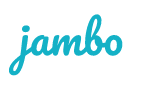
Meaningful engagement with Indigenous communities is a critical component of effective and ethical government decision-making. However, traditional engagement methods often fall short, struggling with issues of inclusivity, a lack of transparency, and difficulty in maintaining long-term records of consultation. In response to these challenges, technology can play a transformative role. By providing teams with tools that enhance effectiveness, transparency, and respect for Indigenous traditional knowledge, technology offers a path toward strengthening and improving government-Indigenous relationships.
The current state of Indigenous engagement in government
Effective engagement between government bodies and Indigenous communities is crucial for respecting Indigenous rights, meeting legal obligations, and ensuring policies are informed by diverse perspectives. The current landscape relies on a mix of standard practices, yet it is often hampered by significant barriers that necessitate a modern, culturally sensitive approach.
The current traditional methods governments use to engage with First Nations, Inuit, and Métis communities are:
- In-person meetings and workshops: These methods offer opportunities for face-to-face dialogue, relationship building, and the direct sharing of information.
- Formal consultations: Legally mandated consultation processes are used for decisions that might impact treaty rights or traditional territories. These often involve official letters, submission periods, and structured feedback loops.
- Surveys and questionnaires: These tools gather broad data and feedback from a wider segment of the community, although they often struggle to capture the nuances of oral traditions or complex cultural perspectives.
- Community visits: Government representatives frequently visit communities to foster relationships and gain a deeper understanding of local contexts and concerns firsthand.
Key barriers to effective engagement:
Despite the use of these standard practices, the current state of engagement faces significant challenges that hinder meaningful participation and trust:
- Resource limitations: Both government agencies and Indigenous communities often lack sufficient funding, staff, and time to conduct thorough and ongoing engagement processes. This can lead to rushed consultations or insufficient support for Indigenous communities to participate fully.
- Communication fragmentation and gaps: Information can become siloed within different departments or lost over time, leading to inconsistent messaging and requiring communities to provide the same information repeatedly. This fragmentation makes it challenging to maintain a long-term, coherent relationship.
- A lack of trust: A significant barrier is the deep-seated lack of trust stemming from historical injustices, broken promises, and past consultation processes that were viewed as tokenistic or inadequate. This historical context means that current engagement efforts often start from a position of skepticism.
- Data sovereignty concerns: Traditional methods often involve external parties collecting and managing Indigenous data, raising concerns about who owns, controls, accesses, and benefits from that information (OCAP principles).
- Lack of inclusivity and accessibility: In-person meetings can be inaccessible to off-reserve members, youth, the elderly, or those with disabilities.
- Inflexible timelines: Government timelines are often rigid and do not allow sufficient time for Indigenous leaders to consult with Elders and community members through their own decision-making processes.
Why modernization is needed (and must be culturally sensitive):
The existing barriers demonstrate a clear need for modernizing engagement practices. The fragmented, resource-intensive, and often distrusted nature of current methods means that governments frequently fail to meet their obligations to engage in good faith.
However, modernization cannot simply mean applying new technologies or processes without careful consideration and evaluation. Any changes must be culturally sensitive and respectful of Indigenous protocols, languages, and traditional knowledge systems. Modern tools should facilitate, not replace, human relationships and in-person dialogue.
How technology can support meaningful Indigenous engagement
Meaningful engagement with Indigenous communities requires sincerity, respect, and a commitment to building lasting relationships. Technology alone cannot replace these foundational human connections; it's merely a tool. However, when used thoughtfully, technology can significantly enhance the effectiveness, accountability, and inclusivity of government engagement efforts, all while helping uphold vital cultural protocols.
Here is how technology can support better outcomes:
1. Support language and accessibility
Technology helps break down linguistic and literacy barriers that often prevent meaningful participation.
- Culturally appropriate communication: Technology enables the creation of engagement materials in Indigenous languages and through culturally compatible mediums, such as digital storytelling and community-specific social media groups, ensuring that information is accessible and relevant.
- Translation tools: Digital platforms can provide real-time or documented translation services, ensuring that vital information is available in Indigenous languages or Canada's official languages, respecting linguistic diversity.
2. Offer flexible ways to connect
Respecting community preferences is essential for meaningful participation. A "one-size-fits-all" approach to engagement rarely works for diverse Indigenous communities.
Technology facilitates multiple avenues for dialogue:
- Hybrid meetings: Combining in-person meetings with virtual session platforms allows for broader participation, accommodating geographic distances and varying schedules.
- Multiple input options: This involves allowing communities to provide feedback through various mediums, such as online surveys, dedicated phone lines, email submissions, or digital comment boards, ensuring individuals can engage using their preferred method.
- Engagement software: Engagement software can be used to track and report on feedback received, making the decision-making process more transparent and demonstrating how Indigenous input was considered, thereby building trust.
3. Document and respect cultural protocols
Consistency in respecting cultural practices is vital for building trust. When staff leave or projects shift, organizational memory regarding protocols can be lost. However, with digital tools, such as engagement software, a persistent memory can be provided for these protocols.
Centralized engagement platforms can store detailed notes on community-specific cultural considerations, allowing for more informed decision-making. This might include information on appropriate contact people, traditional titles, the correct way to acknowledge territory, or specific meeting opening ceremonies. This documentation ensures consistency and demonstrates ongoing respect for Indigenous governance and practices across all government projects.
4. Create a centralized record of engagement
Meaningful engagement is a continuous journey, not a series of one-off interactions. Continuity builds trust, while fragmentation erodes it.
A centralized digital record addresses this challenge directly:
- Institutional knowledge preservation: Engagement management software ensures that when Canadian government staff members change roles, the history of previous interactions, commitments made, and community preferences does not disappear with them.
- Building on history: By tracking engagement history in a single, accessible system, government teams can ensure each new interaction builds upon past efforts, fostering a more coherent, respectful, and trusting relationship rather than forcing communities to start from scratch repeatedly.
How governments can use engagement software to strengthen Indigenous relationships
Building and maintaining long-term, trusting relationships with Indigenous communities is essential for respectful and effective governance. The right digital tools can be more than just administrative aids; they can be instrumental in fostering genuine connections. Engagement software, such as Jambo, is a specialized platform designed to support these complex processes. By leveraging this technology, governments can enhance continuity, increase transparency, and manage critical information more effectively.
1. Supporting continuity
Meaningful engagement is a continuous process that builds on past interactions. A significant challenge for governments is the loss of institutional knowledge when staff or projects change. Engagement software addresses this by creating a centralized, persistent record. Governments can use engagement software to:
- Maintain a shared history: Log and track all engagement activities, including key issues discussed, commitments made, and project outcomes in a single location.
- Retain community preferences: Document essential information, such as community-specific protocols, the preferred method of contacting leadership, and guidelines for respectfully opening a meeting.
- Avoid engagement fatigue: Ensure that each new project builds on existing relationships and knowledge, preventing the need for communities to provide the same information or "start from scratch repeatedly." This continuity helps build trust and demonstrates a long-term commitment to the community.
2. Increasing transparency and accountability
Transparency is a powerful tool for bridging the gap between simple consultation and genuine, respectful collaboration. Technology can facilitate this by ensuring clear documentation and consistent follow-through. With engagement software, government teams can:
- Log and track commitments: Record promises made during meetings and set reminders to ensure they are followed up on, demonstrating accountability.
- Track progress: Create dashboards that help teams monitor the progress of commitments and engagement activities, which can then be shared with communities to provide real-time updates.
- Protect information: Utilize enterprise-level security features to protect sensitive or sacred information shared by communities.
- Demonstrate accountability: Generate reports that comprehensively document all engagement activities, which can be used to show accountability and build trust with communities and internal stakeholders.
Discover how governments move from checklist to genuine stakeholder engagement →
Key capabilities to look for in an engagement software
When selecting a digital tool to support Indigenous engagement, governments should prioritize features that are specifically designed for this purpose:
- Purpose-built for engagement: The software should be designed to manage the unique complexities of relationships, rather than being a generic database.
- Role-based engagement tracking: The ability to log engagement with contacts based on their specific role at the time is crucial for maintaining engagement context.
- Flexible data entry and permissions: The tool should offer easy data entry options and multi-level user permissions to ensure controlled access to confidential information, such as benefit-sharing agreements.
- GIS integration: Integration with Geographic Information Systems (GIS) can help teams visualize and understand the geographic context of engagement activities and traditional territories.
- Straightforward data export: Easy data export functions are essential for creating comprehensive reports and sharing information with stakeholders.
Real-world examples of how technology transforms Indigenous engagement
The following are some case studies of engagement software and other digital platforms transforming the way governments engage with Indigenous communities.
1. Engagement management modernization in Canadian Crown corporations
Canadian Crown corporations interact with a wide range of stakeholders and rights-holders groups, including government bodies, private-sector partners, Indigenous communities, and the general public.
Because these government agencies deliver essential services and operate in highly regulated environments, strong stakeholder engagement is crucial for maintaining public trust, meeting regulatory obligations, and ensuring that projects stay on schedule and within budget.
How technology was used:
Many Crown corporations face strict privacy and data-sovereignty requirements, which mandate that sensitive information be stored securely within Canadian borders.
Before adopting Jambo, some Crown corporations relied on fragmented systems, including spreadsheets, personal notes, and shared drives. These legacy processes created significant risks, including data loss, limited visibility across teams, and challenges in maintaining continuity when staff left the organization. Migrating to Jambo allowed teams to replace these outdated workflows with secure, auditable, and efficient stakeholder management processes.
"Sensitive commitments such as those made to First Nations communities require precise and secure documentation. We needed an effective method for capturing and storing this type of information." -Engagement Strategist, Canadian Crown Corporation.
To address this, several Canadian Crown corporations have adopted Jambo, a Canadian-made Stakeholder Relationship Management (SRM) platform. Jambo enables teams to centralize stakeholder contact information, document interests and concerns, coordinate outreach, and track commitments across multiple projects - all within a secure, Canada-based cloud environment.
Lessons learned: Centralized, secure systems significantly enhance continuity, accountability, and trust, especially when collaborating with Indigenous partners and other sensitive stakeholder groups. Crown corporations learned that decentralized tools like spreadsheets cannot support the level of rigour required for modern engagement.
2. Wah-ila-toos clean energy initiative (Canada)
This federal government initiative involves several departments working to transition Indigenous and remote communities from fossil fuels to renewable energy systems. It features a collaborative governance structure, including an Indigenous Council that advises on the mandate.
How technology was used:
The initiative relies on digital platforms and information sharing to coordinate efforts across multiple government departments (e.g., NRCan, CIRNAC, ISC) and to facilitate easier access to programs for communities. The collaborative governance model leverages digital communication to ensure Indigenous voices inform program design.
Lessons learned: Co-development and collaborative design are essential. The process must be designed with Indigenous communities, not for them. Technology serves as a coordination and accessibility tool that facilitates this collaborative governance model, reducing bureaucratic overlap and fragmentation.
3. Wunan Foundation Social Capital App (Australia)
Researchers in Australia partnered with the Wunan Foundation, an Indigenous not-for-profit organization, to develop an app to better connect their community members.
How technology was used:
A customized mobile application designed with the community's input to address a specific local need for enhanced connectivity and social capital. The app provided a tailored solution for communication within the community, leveraging technology to strengthen internal networks and information sharing.
Lessons learned: Solutions must be localized and community-led. Working with an existing Indigenous organization to co-design the technology ensures the app addresses a genuine need and is adopted by the community.
4. Indigenous knowledge policy frameworks (Canada)
Federal agencies in Canada, including the Impact Assessment Agency of Canada and the Canada Energy Regulator, are developing and implementing policy frameworks to ensure that Indigenous Knowledge is considered and protected during project reviews and regulatory decisions.
How technology was used:
Agencies utilize digital platforms for information management and to guide federal officials on implementing provisions related to Indigenous Knowledge. The technology helps manage the process of documenting, storing, and applying culturally sensitive or confidential information securely within review processes.
Lessons learned: Security and respect for sensitive information are paramount. Digital tools must have robust security features and clear protocols for managing information that is deemed sensitive or sacred by the relevant communities. Multi-level user permissions are essential for controlling access to confidential data.
Strengthen your Indigenous engagement practices with Jambo
Build stronger, more transparent relationships with Indigenous communities by managing every interaction and commitment in one secure, organized platform. Jambo helps your team document concerns, track promises, and collaborate with confidence, ensuring nothing is missed and every engagement is meaningful. Consider requesting a demo to see how Jambo SRM can benefit your team.








